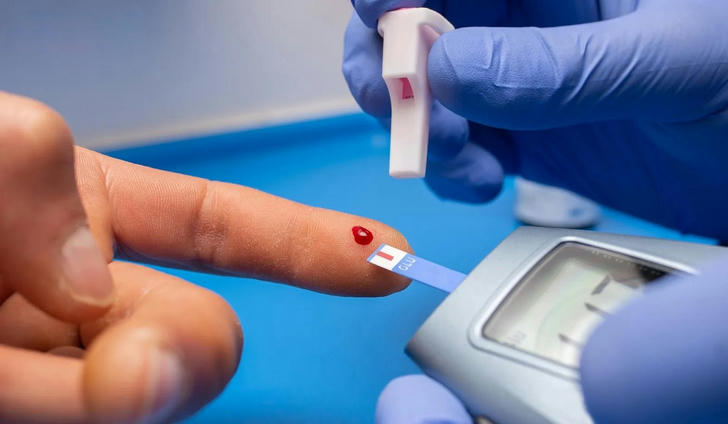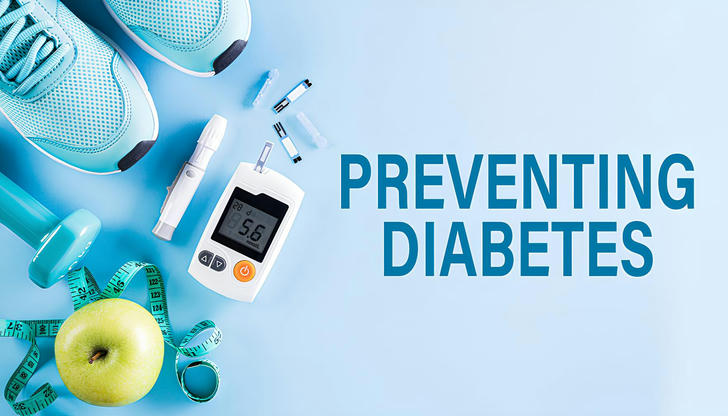Understanding Diabetes in America: A Growing Health Concern
Diabetes is a major health concern in the United States, affecting millions of people across the nation. According to the Centers for Disease Control and Prevention (CDC), approximately 37 million Americans have diabetes, and nearly 1 in 5 don’t even know they have it! In addition, another 96 million adults have prediabetes, a condition that often leads to type 2 diabetes if left untreated. With this large-scale health issue in mind, it’s crucial to understand what diabetes is, how it affects the body, and how we can prevent and manage it. Let’s dive in!

What is Diabetes? 🤔
Diabetes is a chronic condition that affects how your body turns food into energy. It happens when your body either doesn't produce enough insulin (a hormone that helps regulate blood sugar) or doesn't use it effectively. This results in high blood sugar levels, which can lead to serious health problems if not managed properly.
There are three main types of diabetes:
Type 1 Diabetes: This is an autoimmune condition where the body attacks the insulin-producing cells in the pancreas. It typically appears in childhood or early adulthood and requires lifelong insulin therapy.
Type 2 Diabetes: The most common form, type 2 diabetes occurs when the body becomes resistant to insulin or doesn't produce enough. It is closely linked to lifestyle factors like poor diet, lack of exercise, and obesity. Type 2 diabetes usually develops in adults, but it’s becoming increasingly common in children and teenagers due to rising obesity rates.
Gestational Diabetes: This type of diabetes occurs during pregnancy and affects about 2-10% of pregnancies in the U.S. It increases the risk of developing type 2 diabetes later in life for both the mother and child.
The Impact of Diabetes on the Body 🏥
If left untreated or poorly managed, diabetes can cause a range of serious health problems, including:
Heart disease and stroke: High blood sugar can damage blood vessels and nerves, leading to cardiovascular issues.
Kidney damage (diabetic nephropathy): Over time, diabetes can damage the kidneys, potentially leading to kidney failure.
Nerve damage (diabetic neuropathy): High blood sugar can harm nerves, particularly in the feet and hands, which can lead to numbness, pain, and even amputation in severe cases.
Eye problems: Diabetes can lead to diabetic retinopathy, which can cause blindness if not properly managed.
Increased risk of infections: High blood sugar can weaken the immune system, making it harder to fight infections.
One notable example of the impact of diabetes is the case of Tom Hanks, the famous actor. In 2013, Hanks publicly shared that he was diagnosed with type 2 diabetes. After years of struggling with weight gain, poor eating habits, and inactivity, Hanks' diagnosis was a wake-up call. His story highlights how type 2 diabetes is closely tied to lifestyle choices, and it serves as an important reminder that managing your health is crucial in preventing this condition.
The Diabetes Epidemic in America 🇺🇸
Diabetes has reached epidemic levels in the U.S., with alarming statistics showing the widespread nature of the condition:
1 in 10 Americans has diabetes.
1 in 3 adults is at risk of developing type 2 diabetes due to prediabetes.
The cost of diabetes in the U.S. is staggering, with an estimated $327 billion spent annually on diabetes-related medical expenses and lost productivity, according to the American Diabetes Association (ADA).
But why is diabetes so prevalent in the United States? There are several contributing factors:
Poor diet: The typical American diet is often high in processed foods, sugar, and unhealthy fats, all of which contribute to obesity and insulin resistance, which are major risk factors for type 2 diabetes.
Obesity: According to the CDC, nearly 42% of adults in the U.S. are obese, and obesity is one of the leading causes of type 2 diabetes. Excess fat, especially around the abdomen, can interfere with the body’s ability to use insulin properly.
Physical inactivity: Sedentary lifestyles are common in America, and regular physical activity is crucial for maintaining healthy blood sugar levels. Unfortunately, many Americans fail to get the recommended 150 minutes of exercise per week.
Aging population: As the population ages, the number of people with diabetes increases. The risk of developing type 2 diabetes rises significantly after the age of 45.

Preventing and Managing Diabetes 💪
The good news is that diabetes can often be prevented or managed with the right lifestyle changes. Here’s how:
Eat a balanced diet: A diet rich in vegetables, whole grains, lean proteins, and healthy fats can help regulate blood sugar levels. Reducing processed foods and sugary drinks is especially important.
Exercise regularly: Engaging in physical activity helps your body use insulin more effectively and can help you maintain a healthy weight. Aim for at least 150 minutes of moderate-intensity exercise each week, such as walking, cycling, or swimming.
Maintain a healthy weight: Losing just 5-10% of your body weight can significantly reduce your risk of developing type 2 diabetes.
Monitor your blood sugar: If you already have diabetes, it’s important to regularly monitor your blood sugar levels and follow your doctor’s advice on medication, diet, and exercise.
Work with healthcare professionals: Your doctor can help you create a personalized plan to manage or prevent diabetes. Regular check-ups and screenings can help catch the disease early, which is key to preventing complications.
Real-Life Examples of Diabetes Prevention 🏃♀️🥗
Many people have successfully reversed prediabetes or managed type 2 diabetes through lifestyle changes. One inspiring story is that of Renee Williams, a woman who was diagnosed with prediabetes and decided to make drastic changes. She lost 70 pounds, adopted a plant-based diet, and began exercising regularly. As a result, her blood sugar levels returned to normal, and she was able to avoid the progression to type 2 diabetes.
Another example comes from The Diabetes Prevention Program (DPP), a national study that showed that people with prediabetes can prevent or delay the onset of type 2 diabetes by losing 5-7% of their body weight and engaging in regular physical activity. Participants who followed these guidelines reduced their risk of developing diabetes by 58%!
Conclusion: Take Charge of Your Health 💥
Diabetes is a significant health issue in the U.S., but it doesn’t have to be a life sentence. With the right knowledge, lifestyle changes, and regular monitoring, many people are able to manage their condition and even prevent it from developing in the first place.
The key is understanding your risk, making healthy choices, and seeking the support of healthcare professionals. Remember, small changes can make a big difference. Whether it’s cutting back on sugary drinks, going for a walk after dinner, or talking to your doctor about your risk, every step counts.
If you’re at risk, or already living with diabetes, remember that you’re not alone—there’s a whole community out there supporting you. Together, we can take charge of our health and fight the diabetes epidemic! 💪
